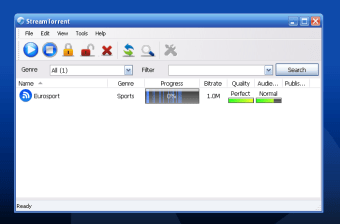


International Journal of Cyber Criminology, 2, 308–333.ĬNN. Computer crime victimization and integrated theory: An empirical assessment. Cryptolocker: Police take further action on ransomware that hit 50,000 in UK. Journal of Criminal Justice, 38, 227–236.īrewster, T. The effect of self-control on victimization in the cyberworld. International Journal of Cyber Criminology, 3, 400–420.īossler, A. On-line activities, guardianship, and malware infection: An examination of routine activities theory. Global Information Assurance Certifications. The Morris worm: How it affected computer security and lessons learned by it.
#Soda player malware code
Hackers release source code for a powerful DDoS app called Mirai. Cyberdependent crime victimization: The same risk for everyone? Cyberpsychology, Behavior and Social Networking, 21, 84–90.īiggs, J. C., Dreißigacker, A., von Skarczinski, B., & Wollinger, G. International Journal of Electronic Security & Digital Forensics, 5, 90–109.īBC News. Detecting malicious behavior using supervised learning algorithms of the function calls. Journal of Systems and Software, 100, 91–102.Īlazab, M., & Venkatraman, S. Profiling and classifying the behavior of malicious codes. Malware developers are getting smarter in terms of their ability to develop malware that goes undetected by antimalware software, and antimalware developers need to constantly remain innovative to combat smarter malware. Accordingly, to effectively address malware, the technical aspects of the problem as well as the human side of the issue must be jointly considered and targeted.

#Soda player malware software
The extant evidence indicates that irresponsible use of the Internet, such as failing to use a security software or clicking on questionable websites, can also lead to malware infection victimization. In addition, researchers have employed criminological theories, in particular, self-control and routine activity theories, to determine factors that may increase the risks of malware infection victimization. Malware can be prevented by using appropriate security software such as firewalls, antivirus software, and antispyware. Sometimes, even governments tend to use malware for espionage and other political motives. The malware with the most damage known to date have been the Sasser and Netsky worms with an estimated damage of $31 billion. Some notable viruses, in chronological order, include the Morris worm in 1988, the Melissa virus in 1999, the ILOVEYOU virus in 2000, the Anna Kournikova virus in 2001, The code Red worm in 2001, the Slammer virus in 2003, the Mydoom worm in 2004, the Sasser and Netsky worms in 2004, the Storm worm in 2007, the Mirai malware in 2016, and the WannaCry ransomware in 2017.

Some have caused significant damage to individuals and organizations, sometimes in the order of billions of US dollars. To date, over a million different viruses and other malware have been detected. Some examples of malware include – viruses, worms, Trojan horses, spyware, keyloggers, botnets, rootkits, ransomware, scareware, and drive-by downloads. There are many types of malware, depending on how they are spread and the nature of harm they intend. Malicious software, or malware for short, is software designed with a nefarious intent of harming the computer user.


 0 kommentar(er)
0 kommentar(er)
